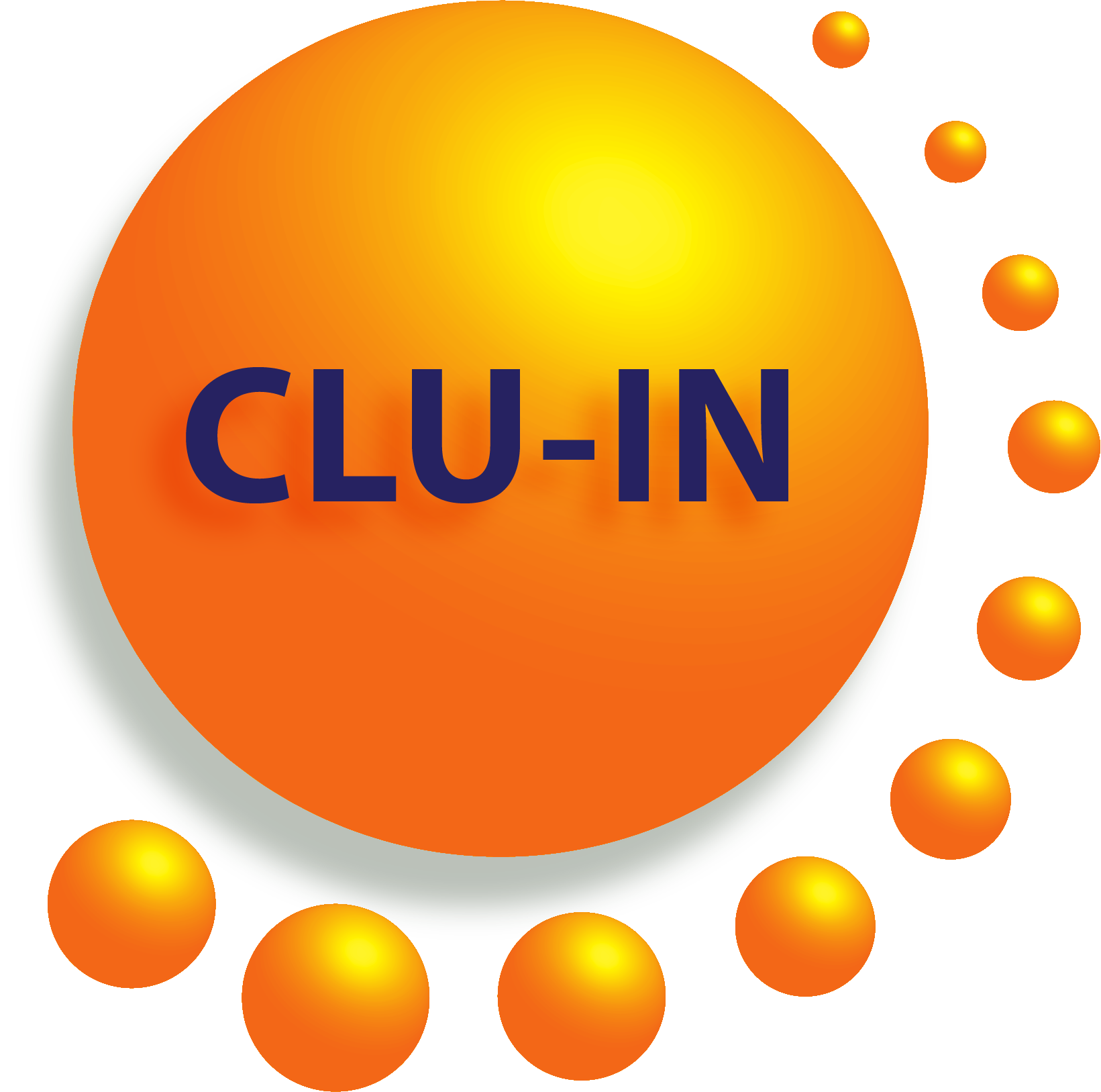Virtual Technology Fair: Heavy Metals Detection and Treatment for Water
Archived: Wednesday, August 27, 2025
Sponsored by: National Institute of Environmental Health Sciences (NIEHS)
The NIEHS Superfund Research Program (SRP) presents a "Virtual Technology Fair" featuring Small Business Innovation Research (SBIR) grant recipients developing innovative solutions for heavy metals in water. Speakers will give a "pitch", showcasing the work underway and its value-added to disrupt the market. We encourage participation by and questions from potential end-users, customers, and other stakeholders to accelerate technology transfer of these promising approaches. The August 27th webinar will feature ChemFinity Technologies, Inc. on "Remediation of acid mine drainage water using selective metal-harvesting membranes;" OndaVia, Inc. on "Automated, In-Line Hexavalent Chromium Analyzer;" Microvi Biotechnologies, Inc. on "Intensified, High-Rate Reductive Immobilization of Hexavalent Chromium;" Picoyune on "Plasmonic Sensor and Field Monitor for Mercury."
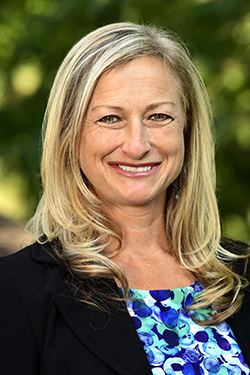 Heather Henry, NIEHS (henryh@niehs.nih.gov)
Heather Henry, NIEHS (henryh@niehs.nih.gov)
Heather Henry, Ph.D., is a health scientist administrator for National Institute of Environmental Health Sciences (NIEHS) where she oversees Superfund Research Program (SRP) grants that span human health toxicology, risk assessment, detection technologies and remediation approaches. She provides guidance to potential applicants for SRP’s Multi-Project Center Grants (P42s), Individual Research Grants (R01s), and Small Business / Technology Transfer Grants (R41-44; SBIR/STTR). She serves on several working groups including: Federal Remediation Technology Roundtable; Federal PFAS Strategy Team; National Nanotechnology Initiative Water Sustainability Team; NIEHS Microbiome; NIEHS Emerging Contaminants; and NIH Disaster Research Response. She has been with NIEHS since 2006. Prior to that, Heather studied bioremediation as part of her doctoral work at the University of Cincinnati and as a Fulbright Postdoctoral Fellow at the University of Melbourne and University of Adelaide in Australia.
Mike Adam, U.S. EPA (adam.michael@epa.gov)
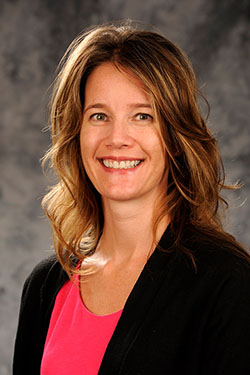 Michelle L. Heacock, Ph.D., NIEHS Superfund Research Program (heacockm@niehs.nih.gov)
Michelle L. Heacock, Ph.D., NIEHS Superfund Research Program (heacockm@niehs.nih.gov)
Michelle Heacock, Ph.D., is currently serving as the acting branch chief of the Hazardous Substances Research Branch, and is a health science administrator where she oversees Superfund Research Program (SRP) grants that span basic molecular mechanisms of biological responses from exposures to hazardous substances, movement of hazardous substances through environmental media, detection technologies, and remediation approaches. Dr. Heacock received her doctorate from Texas A&M University for her work on the interplay between DNA repair proteins and telomeres. Her postdoctoral work was conducted at NIEHS where she studied the DNA repair pathway, base excision repair. She has been with the NIEHS since 2007.
 Dr. Adam Uliana, ChemFinity Technologies
Dr. Adam Uliana, ChemFinity Technologies
Dr. Adam Uliana is the Co-founder and CEO of ChemFinity Technologies, a startup in Brooklyn, NY, that is creating new critical mineral recovery processes that project lower costs and over 99% reductions in energy use, CO2 emissions, and water consumption compared to mining. With expertise in materials chemistry and separations technologies, Adam previously led projects building hardware across four continents to efficiently recover resources, such as gold, water, and chemical commodities from waste. He is a Breakthrough Energy Fellow and Forbes 30 Under 30 honoree. Adam earned his Ph.D. in Chemical Engineering as an NSF Graduate Research Fellow from the University of California, Berkeley, where he co-invented ChemFinity’s metal- and pollutant-extracting sorbent and membrane technologies
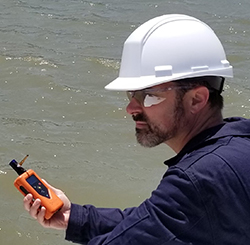 Mark Peterman, Ondavia (peterman@ondavia.com)
Mark Peterman, Ondavia (peterman@ondavia.com)
Mark Peterman is a seasoned serial entrepreneur with a diverse background in both technology and business. His entrepreneurial journey began at the age of thirteen when he founded a recycling company. During his undergraduate years, he honed his technical skills by leading programming initiatives for environmental compliance software at a startup. Peterman's graduate studies at Stanford University led to significant breakthroughs in nanotechnology and microfluidics, as he invented the core technology that would later serve as the foundation for two successful startups. This unique blend of early-stage entrepreneurial experience, technical expertise, and innovation has defined his career trajectory.
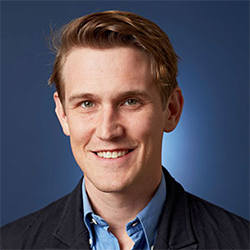 Jay James, Picoyune (jay@picoyune.com)
Jay James, Picoyune (jay@picoyune.com)
Jay completed his PhD in mechanical engineering at University of California, Berkeley. He continued his dissertation work on plasmonic sensing, starting Picoyune in 2013. Picoyune commercialized the first plasmonic gas sensors, with a compact and robust monitor for mercury vapor.
Fatemeh Shirazi, Microvi Biotechnologies (fshirazi@microvi.com)
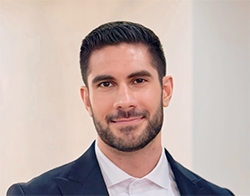 Ameen Razavi, Microvi Biotechnologies (arazavi@microvi.com)
Ameen Razavi, Microvi Biotechnologies (arazavi@microvi.com)
Mr. Razavi is Chief Innovation Officer at Microvi Biotech Inc., where he leads research, development, and commercialization of the company’s proprietary MicroNiche Engineering (MNE) platform. A co-inventor of MNE and named on 17 patents, he has overseen the advancement of breakthrough biocatalytic technologies for water and wastewater treatment, including nutrient removal, PFAS destruction, and heavy metal remediation. Mr. Razavi actively manages partnerships with utilities, engineering firms, and research institutions worldwide, while also supporting investor engagement and federal R&D programs such as NIH and USDA SBIR/STTR initiatives. He has been widely recognized for his work at the intersection of science and entrepreneurship, focusing on scaling microbial systems for industrial and environmental applications. Mr. Razavi holds a Bachelor’s degree in Microbial Biology from the University of California, Berkeley, and training in Management Science & Engineering at Stanford University.
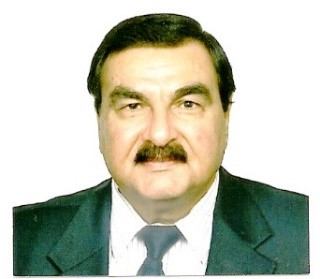 Boby Abu-Eid, Division of Decommissioning, Uranium Recovery, and Waste Programs, Office of Nuclear Material Safety and Safeguards, U.S. Nuclear Regulatory Commission (boby.abu-eid@nrc.gov or 301-415-5811)
Boby Abu-Eid, Division of Decommissioning, Uranium Recovery, and Waste Programs, Office of Nuclear Material Safety and Safeguards, U.S. Nuclear Regulatory Commission (boby.abu-eid@nrc.gov or 301-415-5811)
Dr. Eid is a Senior Level (SLS) Advisor at the US NRC. He provides high level advice on technical and policy issues involving decommissioning, uranium recovery, low-level waste, and environmental protection. He is a member of the Multi-Agency Radiation Survey and Site Investigation Manual (MARSSIM) workgroup and NRC's lead representative on Multi-Agency Radiological Laboratory Analytical Protocols (MARLAP). Before joining the NRC, Dr. Eid conducted research and/or taught at: MIT, University of Bonn, Kuwait Institute for Scientific Research, and Carnegie Institution of Washington. In his present position, Dr. Eid's key activities involve technical/policy analysis; risk analysis and safety reviews, development of models/codes for decommissioning and waste management, new technology developments, and development of multi-agency guidance and protocols. He was a key contributor to assessment and development of NRC regulations and guidance for cleanup and decommissioning for license termination and site release. He holds a Ph.D. from MIT. He is a recipient of NRC's meritorious service award and on the advisory board of national and international conferences.
Moderator:
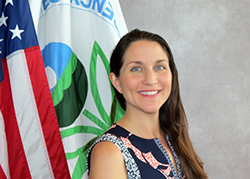 Jean Balent, U.S. EPA Technology Innovation and Field Services Division (balent.jean@epa.gov or 202-566-0832)
Jean Balent, U.S. EPA Technology Innovation and Field Services Division (balent.jean@epa.gov or 202-566-0832)
Ms Balent is on the staff of the EPA's Technology Innovation and Field Services Division where she has worked to collect and disseminate hazardous waste remediation and characterization information since 2003. Ms Balent manages the Clean Up Information Network website and actively supports online communication and collaboration resources available to EPA. She formerly worked with the US Army Corps of Engineers Environmental Engineering Division in the Buffalo District. Ms Balent was also a member of the SUNY-Buffalo Groundwater Research Group where she constructed and tested large scale models of groundwater flow. Ms Balent has also conducted research relating to the Great Lakes, environmental remediation, and brownfields re-development. She holds a Bachelor's degree in environmental engineering from SUNY-Buffalo and a Master's degree in Information Technology from AIU.
Webinar Slides and References:
-
 Slide Presentation for Dr. Adam Uliana (24.4MB/PDF)
Slide Presentation for Dr. Adam Uliana (24.4MB/PDF)
-
 Slide Presentation for Ameen Razavi (849KB/PDF)
Slide Presentation for Ameen Razavi (849KB/PDF)
-
 Slide Presentation for Mark Peterman (1.45MB/PDF)
Slide Presentation for Mark Peterman (1.45MB/PDF)
-
 Slide Presentation for Jay James (1.27MB/PDF)
Slide Presentation for Jay James (1.27MB/PDF)
Additional Resources:
- Grants.Gov for Active Funding Announcements
- NIEHS SRP Profile for Microvi
- NIEHS SRP Profile for Chemfinity
- NIEHS SRP Profile for Picoyune
- NIEHS SRP Profile for OndaVia, Inc.
- Ondavi Website
- Superfund Research Program Small Business Innovation Research (SBIR, R43-R44) for detection and remediation technologies relevant to Superfund
- NIEHS Superfund Research Program
- NIEHS SBIR Program
- NIH Resources
- SBIR/STTR Agencies
Help & FAQs
- Frequently Asked Questions
- Content Questions?
Call Heather Henry at 984-287-3268 or henryh@niehs.nih.gov - Technical Problems?
Leave us a comment - Cancel Your Registration
- My Participation Records
- CEU Credits and PDHs
Zoom Resources
Before Webinar Day
This seminar will be delivered through Zoom. Participants are encouraged to update to the latest version of the Zoom application for the best experience.
If you are unable to install the Zoom application, most functions will be available if you join just using a modern web browser such as Chrome, Edge or Firefox. We strongly encourage you to run the Zoom Meeting Test prior to attending this webinar. Technical support on the day of the webinar will be very limited and subject to significant delays.
Backup Conference Call
If you cannot participate using online audio, you may join the optional call in line. After checking in for the live event using the instructions listed below, you will see several options to participate. Please click the links in option 4 to follow along by phone and obtain the call in number. If you cannot access the phone number, you may request the call in line from the event moderator in the Q&A or send an email to Jean Balent at balent.jean@epa.gov
Click on "Join Webinar" at the top of this screen, enter your exact first and last name as you registered and enter the number of people attending at your location (including yourself). You should then be taken to the Zoom meeting room. Join with Zoom Application: For those joining with the Zoom application, you may be prompted to sign with a zoom account or join as a guest without signing in.
If joining as a guest, you will be prompted to enter your name and email address. Remember your name, image, video or voice may be visible to others in the live event. When done, click "Join" When it is time for the live event to start, the meeting host will admit you to the live Zoom meeting. Join via web browser (without the Zoom Application): For those joining with a web browser, you may close any pop ups prompting you to download the Zoom app. The next window will allow you to enter your name (first name and last name) and check the box that you are not a robot. Click the blue join button. You may also be asked to provide your email address before joining the room. Remember your name, image, video or voice may be visible to others in the live event. When done, click "Join" When it is time for the live event to start, the meeting host will admit you to the live Zoom meeting. You may need to periodically refresh the browser window to confirm if the host has admitted you. The presenters will control what slide you are viewing. You may submit questions online for the instructors to answer during the webinar by typing in the "Q&A" area. It is not necessary to wait until the question and answer periods to submit questions. At the end of the webinar you will be guided to our feedback form and links to additional resources, including the complete presentation. These links will remain active after the webinar. Provided for your convenience. Importing or accepting the invitation within this iCalendar file is not required, and declining the invitation does not cancel your registration. For additional information on iCalendar, please see our
iCalendar Help It is EPA's policy to make reasonable accommodation to persons with disabilities wishing to participate in the agency's programs and activities, pursuant to the Rehabilitation Act of 1973, 29 U.S.C. 791. Any request for accommodation should be made to Heather Henry at 984-287-3268 or henryh@niehs.nih.gov, preferably one week or more in advance of the webinar, so that EPA will have sufficient time to process the request. EPA would welcome specific recommendations from requestors specifying the nature or type of accommodation needed. EPA welcomes specific recommendations from requestors specifying the nature or type of accommodation needed. Please note that CLU-IN provides both alternate phone call-in options and closed captioning for all webinars, and requests for these specific accommodations are not necessary.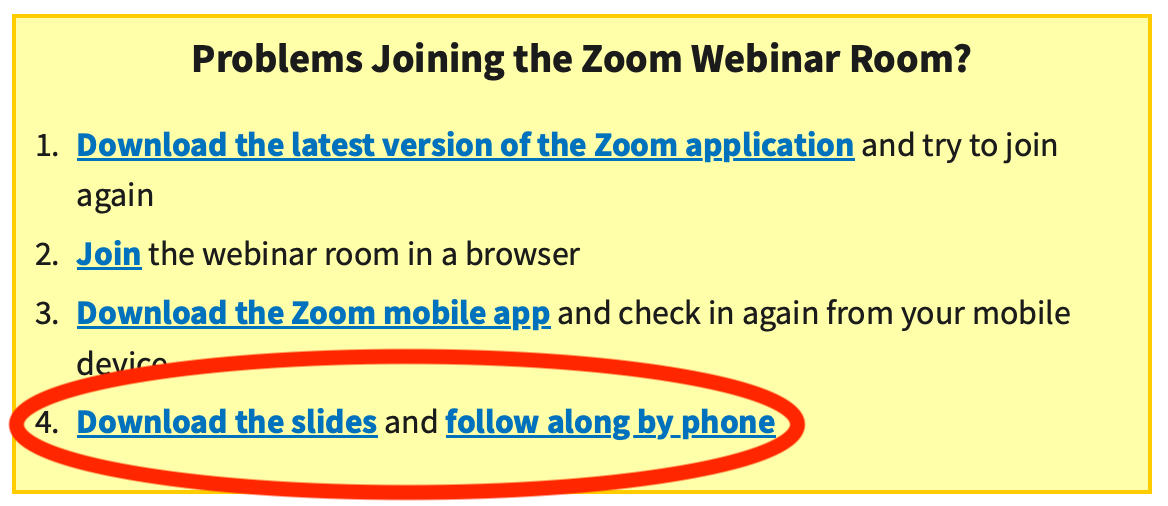
Webinar Day, Checking In

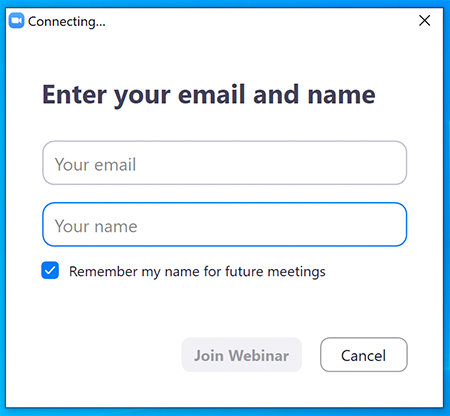

Moving Through Slides
Feedback & Links to Additional Resources
iCalendar File
Rehabilitation Act Notice for Reasonable Accommodation
Rehabilitation Act Notice for Reasonable Accommodation
It is EPA's policy to make reasonable accommodation to persons with disabilities wishing to participate in the agency's programs and activities, pursuant to the Rehabilitation Act of 1973, 29 U.S.C. 791. Any request for accommodation should be made to Heather Henry at 984-287-3268 or henryh@niehs.nih.gov, preferably one week or more in advance of the webinar, so that EPA will have sufficient time to process the request. EPA would welcome specific recommendations from requestors specifying the nature or type of accommodation needed. EPA welcomes specific recommendations from requestors specifying the nature or type of accommodation needed. Please note that CLU-IN provides both alternate phone call-in options and closed captioning for all webinars, and requests for these specific accommodations are not necessary.
Webinar Recording
By participating in this CLU-IN webinar, you automatically agree to authorize recording of audio and visual content presented during this live event and consent to subsequent use of this recording in the public domain by the U.S. Environmental Protection Agency. This recording may include questions, comments and poll responses provided by you during the live event in addition to your name, voice, image or likeness. This recording will be made available after the conclusion of the live event as part of the CLU-IN webinar archives, and will remain available indefinitely. If you do not wish to consent to the recording, please do not join the live event, and contact Jean Balent at 202-566-0832 or balent.jean@epa.gov to discuss your concerns.
Content Disclaimer
This webinar is intended solely to provide information to the public. The views and opinions expressed as part of this webinar do not necessarily state or reflect those of the U.S. Environmental Protection Agency. It is not intended, nor can it be relied upon, to create any rights enforceable by any party in litigation with the United States, or to endorse the use of products or services provided by specific vendors. With respect to this webinar, neither the United States Government nor any of their employees, makes any warranty, express or implied, including the warranties of merchantability and fitness for a particular purpose, or assumes any legal liability or responsibility for the accuracy, completeness, or usefulness of any information, apparatus, product, or process disclosed, or represents that its use would not infringe privately owned rights.

